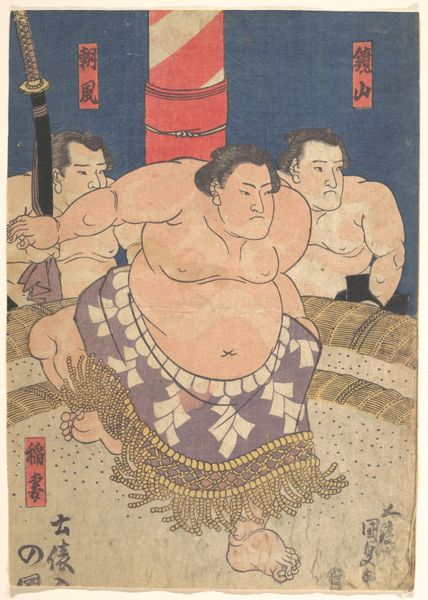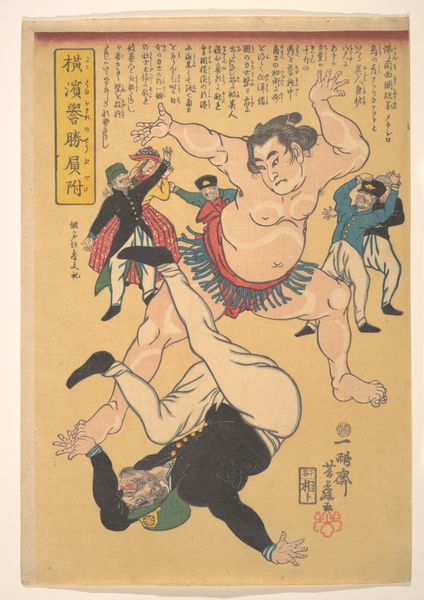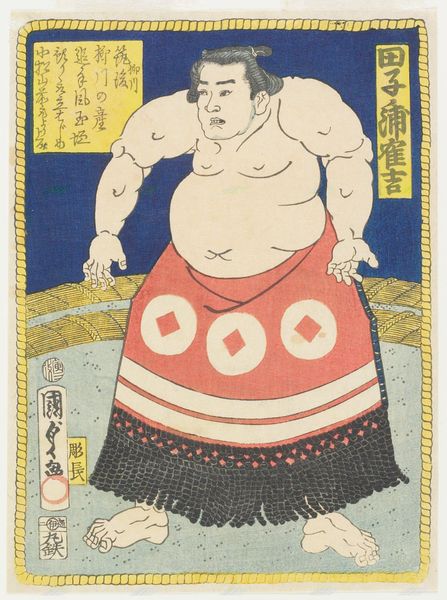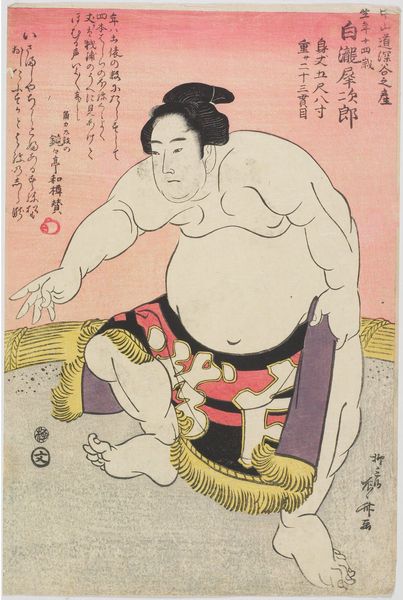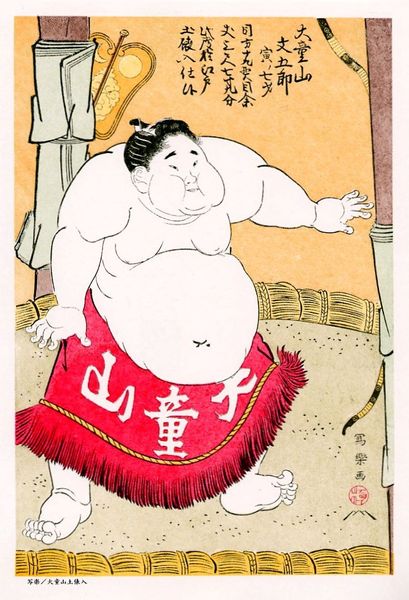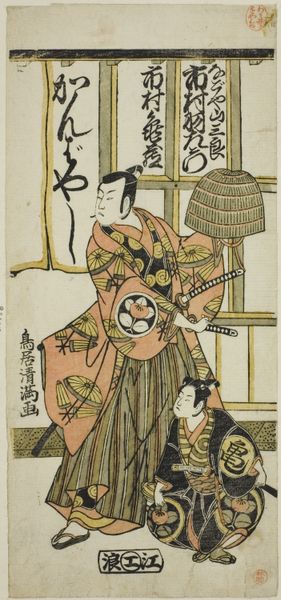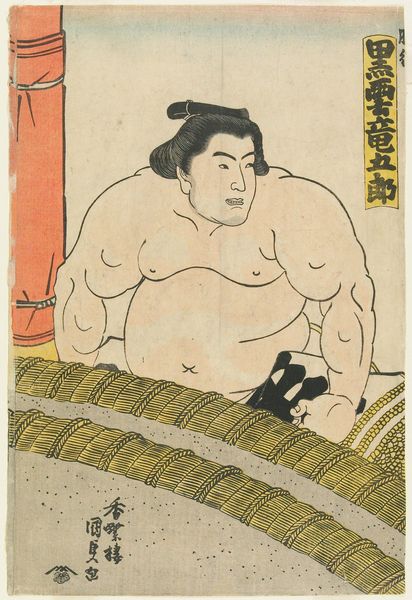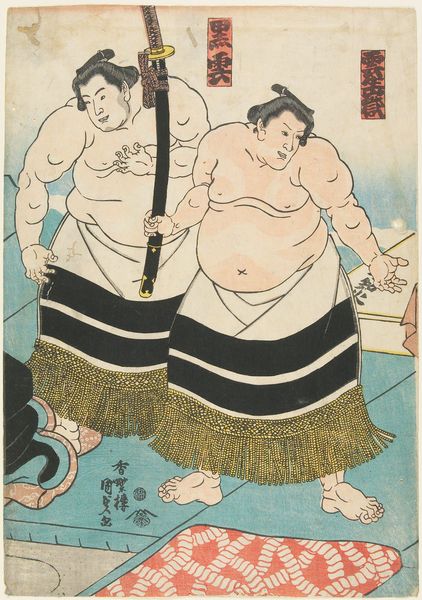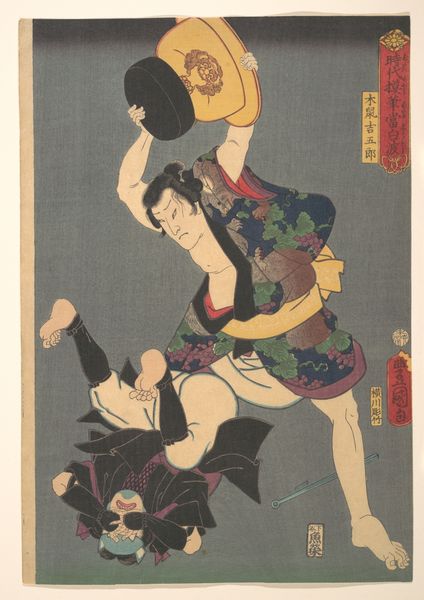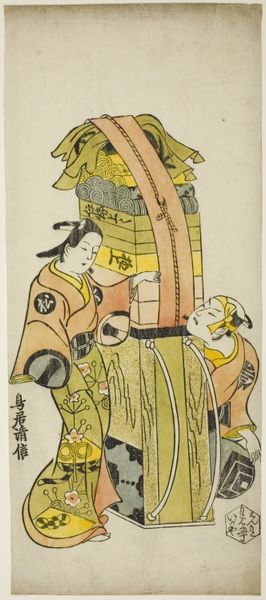
print, woodblock-print
#
portrait
# print
#
asian-art
#
ukiyo-e
#
woodblock-print
#
group-portraits
#
genre-painting
Dimensions: Image: 13 5/8 × 9 5/8 in. (34.6 × 24.4 cm)
Copyright: Public Domain
Editor: Here we have Utagawa Kunisada's "Print," created sometime between 1800 and 1865. It's a woodblock print now at the Metropolitan Museum of Art. My first thought is, it’s surprisingly intimate given the scale of the figures! What do you see in this piece? Curator: What immediately strikes me is the cultural narrative embedded within this Ukiyo-e print. Kunisada captures a moment steeped in the socio-political context of 19th-century Japan. Consider the portrayal of the sumo wrestlers; are they merely athletes, or do they symbolize something more profound? How do their bodies challenge or reinforce existing power structures? Editor: That's a great point. They seem larger than life. Are you saying the print might be commenting on the social status of sumo wrestlers? Curator: Precisely. The Ukiyo-e tradition, while often depicting the fleeting pleasures of the floating world, also provides glimpses into social hierarchies and cultural values. The confident poses, the details of their attire, the very act of immortalizing them in print – it all speaks to a certain level of recognition and, perhaps, a negotiation of their place within society. Do you see anything in the composition that reinforces this? Editor: Well, the central figure is very prominent, literally elevated within the frame. And his expression seems very self-assured. It definitely implies a degree of importance. Curator: Exactly. And how does that resonate with what you know about gender roles and body image from that time period? Were there any particular views about ideal body types in Japan at the time? What does it mean to depict bodies like these with so much presence and agency? Editor: I see now. It's more than just a picture; it's about the push and pull of social status and visibility. Thinking about their embodiment like that completely changes my perspective. Curator: Art enables us to critically explore intersectional cultural themes that are still relevant today. What we see in art says as much about who we are, as where art comes from.
Comments
No comments
Be the first to comment and join the conversation on the ultimate creative platform.
